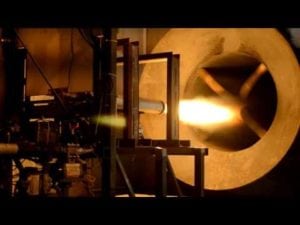3D Printing Rocket Fuel Could Cut Launch Costs in Half
[Via Satellite 01-11-2017] Rocket Crafters (RCI) Co-founder, President and Chief Technology Officer Ronald Jones has been granted a U.S. patent for a method of designing and fabricating fuel grains for hybrid rocket engines using additive manufacturing technology, also known as 3D printing. This method aims to allow the fabrication of an inherently safe and less expensive launch vehicle with only two moving parts, according to a Jan. 10 statement released by the company. Jones stated that 3D printing of the rocket combustion chamber allows RCI’s expendable motors to deliver small satellites to orbits at as low as half current launch costs.
RCI is currently developing Intrepid 1, a mass-producible orbital launch vehicle powered by rocket engines based on the now patented 3D printing technology. This most recent patent furthers RCI’s portfolio of licensed technology that now includes multiple granted patents and pending applications. RCI is currently on track to incorporate their rocket motors into orbital launch vehicles in 2019.
The patented method uses a design and fabrication technique that is only possible using advanced 3D printing technology to boost rocket engine performance while eliminating the historical inconsistencies and sources of excessive vibration that have plagued traditionally designed hybrid rockets for decades. The method capitalizes on 3D printing’s ability to precisely fabricate fuel grains — a tubular shaped structure that dually serves as the rocket’s solid fuel source and combustion chamber — that features internal geometric patterns designed to significantly increase the amount of fuel that is available for combustion on a second-by-second basis during the rocket engine’s operation.
